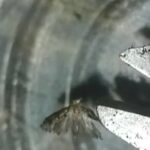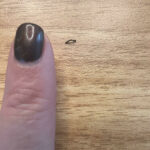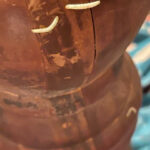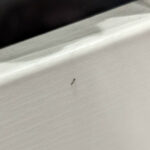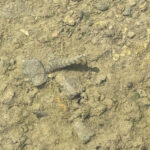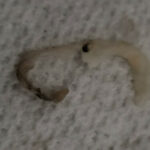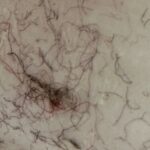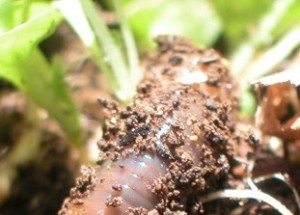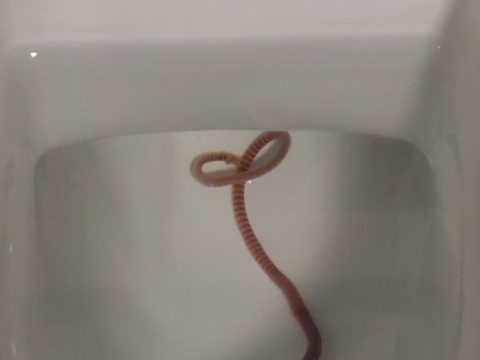A cocoon is a pupal casing made by caterpillars, moths, and other insect larvae. The pupal casing protects the growing insect as it undergoes transformation. In addition to cocoons, pupae may be enclosed in shells or nests. You should not handle cocoons if you do not want to disturb this crucial stage in the life cycle of insects. Unfortunately, in this stage the insect is mostly defenseless. The insect uses concealment as a defense or the pupae may be able to create vibrations or other sounds to scare off predators. A select few species may create toxic secretions as a chemical defense against predators. Continue reading to learn more about identifying one of the most famous cocoon dwellers – caterpillars.
Caterpillar Identification
Identifying worms is much easier than identifying caterpillars. Caterpillar’s change their appearance so quickly to moth or butterfly, it’s tough to keep track of common characteristics of all species. Just think, there are literally thousands of different types of moths and more than 700 different types of butterflies in North America alone. Most of the information that is available about the caterpillar stage of development comes from only a tiny portion of the caterpillars scientists have managed to study. Fortunately, there are several books and a few trusted websites that can help you if you are attempting to identify any given type of caterpillar.
According to Children’s Butterfly Site (www.kidsbutterfly.com), the only readily available books are the Peterson First Guide to Caterpillars by Amy Wright published by Houghton Mifflin, and the Golden guide to Butterflies and Moths by Robert T. Mitchell. You can find (some) photos of caterpillars on the Butterflies and Moths of North America web site. For step-by-step identification assistance, try the Caterpillar Guide of the IDnature guides series of the IDnature guides series. For resources with a regional focus, try Caterpillars of Pacific Northwest Forests and Woodlands and Woodlands or Caterpillars of Eastern Forests. Both of these illustrate common moth and butterfly larvae of the respective regions, with emphasis on those that are economically important. The northwestern guide contains a key that enables the user to identify a specimen based on morphological characteristics. Its use requires the reader to learn some scientific terminology and examine the specimen quite closely, often with a magnifying glass. The eastern guide is organized by family, and the reader will have to search it photo by photo; to make it easier to read, a photo thumbnails feature has been added to this resource. – www.kidsbutterfly.com
Worm Identification
The branch of zoology that deals with the study of insects is called “entomology.” Although insects were studied as early as the 4th century BC, particularly by Aristotle, the modern science did not begin to develop until the 17th century ad. The science of entomology received great impetus in the 19th century, largely as a result of the publication of On the Origin of Species (1859) Charles Darwin, which showed how the study of insects illuminates certain aspects of evolution. In the 20th century, entomological research was further stimulated by successes in the search for solutions to medical and economic problems involving insects. Today, there is more research done and literature published annually in this field than in any other branch of zoology.” –By MSN Encarta Encyclopedia:
Because there are more than 2,700 species of earthworm alone, when identifying worms, there are several important steps that should be taken in order to identify them correctly. First, you should become familiar with the key characteristics used for identifying earthworms. Just a few of the characteristics used to identify earthworms include: Genital tumescene (GT), the Tubercula pubertatis (TP), and the Clitellum.
The clitellum of adult earthworms contains features called genital tumescence, and tubercula pubertatis. The clitellum features, the male pores, and female pores are found above the clitellum and are all parts of the earthworm reproductive system. The earthworm also has “setae” which are tiny hair-like projections that are arranged in rows along the earthworm body. The setae are used are used for locomotion by the earthworm. The prostomium is the earthworm mouth. The size, shape, and position of the different characteristics of the worm are different in different species of earthworms and will help you to identify the species of earthworms you may be dealing with.
After you have become familiar with earthworm characteristics, you should become familiar with the characteristics of earthworms that indicate which ecological group they belong to. There are three broad ecological groups that have been identified for earthworms including: epigeic, endogeic, and anecic. The groups are based on what the earthworms eat and where they tend to live in the soil. The epigeic group is a litter feeder, litter dweller, pigmented, small in size, and it doesn’t burrow. The endogeic group consists of rich soil feeders, topsoil dwellers, has no pigmentation, burrows horizontally, and it is small in size. The anecic consists of litter and soil feeders, soil dwellers, dorsally pigmented bodies, extensive vertical burrows, and a large size. Size and color are usually good distinguishers for adult earthworms.
For more information about identifying worms, you can download an online identification key for earthworms by clicking here to visit The Backyard Nature websites’ key or to access an online field guide to earthworms, click here.
All About Worms is always free, always reader-supported. Your tips via CashApp, Venmo, or Paypal are appreciated! Receipts will come from ISIPP Publishing.




